

BLOGS > MARCH 31, 2020
BY BETSY POTASH
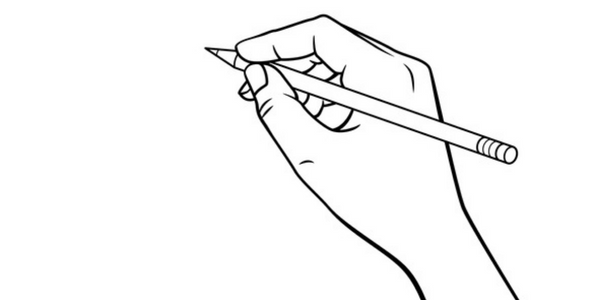
Few people would argue that taking notes is one of the great joys of being a student. Taking good notes can be a huge asset in academic life, yet it’s generally viewed as a tedious process, perfected by a few students while the rest scrape along as best they can.
Personally, I feel the same way about lectures. At times it might be necessary, but give me a project, mock trial, lab, collaborative artistic production, poetry slam or just about anything else and I’ll be much happier as a teacher.
Yet sometimes kids need to listen while experts share information, whether it comes in the form of a lecture, podcast or a video. And if they hope to remember any of that information, well, notes will be necessary for students.
Enter sketchnotes -- the magical twist on listening that takes it from passive to active.
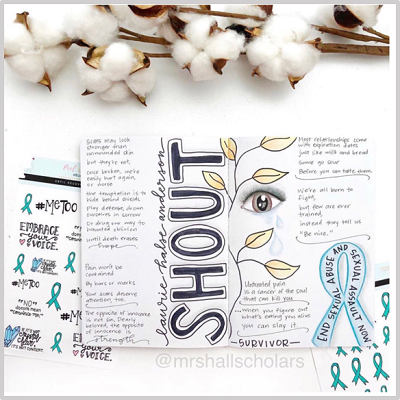
Years ago, a designer named Mike Rohde sat in lecture after lecture, filling up thick notebooks with careful, perfect notes. He was so good at it. He hated it.
Then, overnight he had an epiphany. What if instead of writing down everything he heard so he could go back over everything again later (if he ever actually wanted to), he did the work of processing as he listened, only capturing the big ideas that really mattered in his notes?
Suddenly, he began to enjoy the process of listening, learning and capturing the knowledge he was gaining on paper. He had time to embellish the ideas, connect big thoughts, brighten letters and words with artistry, add icons, symbols, or pictures here and there. Suddenly, he enjoyed taking notes. Suddenly, they were fun to look at. Suddenly, big ideas stood out.
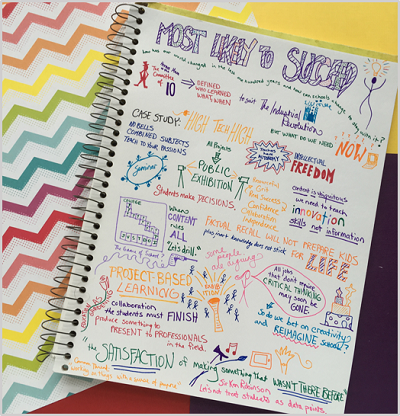
Since Mike’s notes went from dull to dynamic, his vision for sketchnoting has spread across the world, from design conferences to classrooms. Just search the sketchnotes hashtag on any social media platform to see all the ways this medium is used.
But why does it work? Why do sketchnotes make taking notes fun at the same time they make information more memorable? Well, it helps us remember things when our work taps into the two different ways we process things – the visual AND the verbal. So often the work of schools trends towards writing and speaking, with visual representations of ideas relegated to textbook illustrations or the occasional timeline. Sketchnotes help students tap into both sides of their brain, and that process makes it easier to remember information.
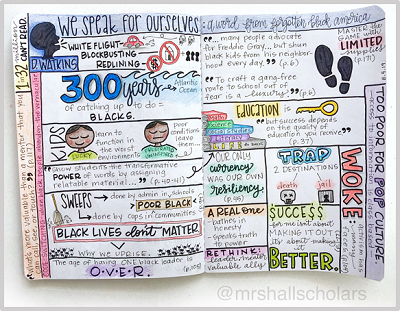
So how can you get started with sketchnotes? You might want to show your students a visual explanation to get rolling. Mike’s got a great mini-workshop on YouTube if you’ve got the time, or you could opt for this quick and lovely introduction to visual notetaking from Sketcho Frenzy.
From there, you might want to comfort your art-fearing students that the big goal of sketchnotes is to capture “ideas, not art,” as Mike often reminds people. Though their sketchnotes may end up becoming complex and artistic in the end, that’s not required. The initial goal is for students to get important ideas down onto the page in a way that’s memorable, rather than simply writing everything they hear verbatim in bullet pointed lists.
It might also be helpful to give students a few ideas for what can go in their sketchnotes.
For example:
You could also pick out some fun examples to show from Mike Rohde’s Flickr account overflowing with sketchnotes of lectures, but also of restaurants, sermons, coffee shops, biking trips and more.
OK, so let’s assume you’ve introduced your students to sketchnotes with a video, some examples and a little background on how sketchnotes can help them learn and remember information effectively. They’re excited to get started. Now what?
There are SO many ways you can incorporate this strategy into your lessons.
Here are ten:
1. Give a short lecture and invite students to sketchnote as they listen. Then do a gallery walk so they can see what other people thought were the big ideas from the lecture.
2. While sharing key information with students, sketchnote your own lecture on the board, so students see how you process the ideas visually.
3. Play a TED Talk, documentary or podcast in class, and make the companion assignment a set of sketchnotes showcasing the main ideas.
4. As students conduct research, ask them to create sketchnote notecards for each source.
5. Ask students to create a sketchnotes review page for themselves before a major test, then do a gallery study walk, in which everyone has time to read through and examine the visuals for each other’s impressions of the most important ideas from the unit.
6. Have an official class sketchnoter for each discussion and put them up in an Instagram-feed style bulletin board that everyone can see. Absent students can catch up, and someone in class can step up to review main ideas from the previous discussion via the sketchnotes before the next discussion.
7. Start a class Instagram that features the main concepts of your course, sharing highlight sketchnotes throughout the year for an intended audience of other students around the world who might appreciate visual help with understanding the course concepts.
8. Have your students create a video showing how to sketchnote and why it’s worthwhile and share it with teachers throughout the school. Then have the entire school create sketchnotes for a guest speaker at an assembly and put them up in the halls around the school.
9. Give options in differentiated final projects to create sketchnoted versions of the unit material.
10. Use your students’ growing familiarity with sketchnotes to segue easily into one-pager assignments.
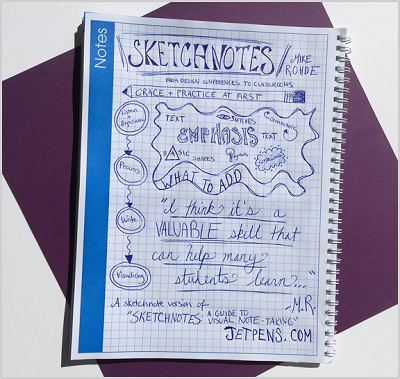
However you decide to incorporate sketchnotes into your course, you’ll be giving visual students a tool they can use for life, and helping verbal learners expand their options and get more comfortable with their visual side. With sketchnotes, EVERYONE will have the chance to make their listening more active and their learning more memorable.

BETSY POTASH
Betsy’s passion is helping English teachers build innovative and creative lessons. Get inspired and follow along with her at Spark Creativity.
Unbeatable Deals on Favorite Next-in-Series Books
July 15, 2025
Plot twist! For a limited time only, Follett Content is offering next-in-series releases at an amazing preorder discount. These hit series are beloved by readers of all ages, and the new installments are sure to be favorites in your classroom or...
Read more
An Author Interview with Drew Daywalt
June 27, 2025
Drew Daywalt, award-winning author of the best-selling The Day the Crayons Quit series, is about to release his second middle grade book with illustrator Mike Lowery, No Sam! and the Meow of Deception. The title continues the hilarious adventures of Sam...
Read more
An Author Interview with Adam Wallenta and Makana Wallenta
June 27, 2025
Get ready to rock the galaxy with the first volume of Punk Taco – a wildly imaginative, music-fueled sci-fi adventure from father-son duo Adam and Makana Wallenta. Created when Makana was just five years old, this award-winning graphic novel now debuts...
Read more
An Author Interview with Lisa Manuzak Wiley
June 27, 2025
A bewitching new graphic novel series is arriving this fall!Author-illustrator Lisa Manuzak Wiley, who grew up in Hawaii, blends cozy fantasy, sisterhood, and tropical charm in a heartfelt homage to her roots: The Witches of Pepperwood Bay Vol. 1. Lisa...
Read more
What We're Reading – Books to Add to Your TBR List
June 4, 2025
As a Follett Content Outside Sales Consultant, I’m not only an avid reader, but also a passionate book reviewer! I’ve curated my top 10 book picks that are perfect for adding to your To Be Read (TBR) list. These titles...
Read more
Author Joseph Koszary on the Changes Made to the International Baccalaureate Extended Essay
May 22, 2025
As someone who’s served as an extended essay coordinator, examiner, and supervisor, I’ve grown deeply familiar with the previous incarnation of the extended essay (EE). Like many of you, years of accumulated experience have made supporting students through the process...
Read more